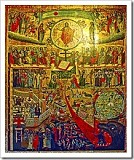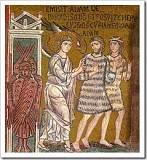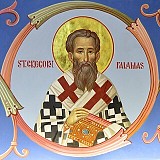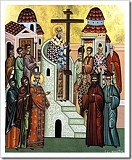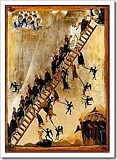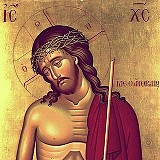Veneration of the Holy Cross (Third Sunday in Lent) March 23rd, 2025
"We also adore the likeness of the honorable and life giving Cross, even though it is made of another material. We do not honor the material, but the likeness as a symbol of Christ. We preach Christ crucified. Therefore, the sign of Christ in the Cross is to be adored, for wherever the sign may be, there He will be too. If the form of the cross should happen to be destroyed however, the material from which the cross was composed is not to be adored, even if it was of gold or precious stones. We honor the material as a sign of Christ, for wherever the sign is, Christ is there. We also trace this sign upon our bodies and thereby bless ourselves. Thus we adore everything that has reference to God, although it is to Him that we direct the worship."
Mid-Lent: The Holy Cross
Love: A Cross and Resurrection
A Hope to Carry Us: Reflections on the Holy Cross
Sunday of the Cross (podcast)
Veneration of the Cross (Children's lesson & activities)
Adoration of the Holy Cross
Rejoice, O life-bearing Cross, O bright paradise of the Church, O Tree of incorruption, thou who didst bring forth for us the enjoyment of glory everlasting, through whom the hosts of devils are driven out, the ranks of angels rejoice together, and the congregations of believers celebrate, O unconquerable weapon and impregnable foundation, the triumph of kings and the pride of Priests, grant us to apprehend the Passion of Christ and his Resurrection.
+Vespers of the Feast





